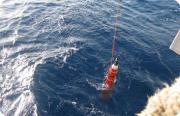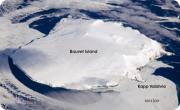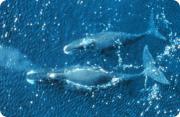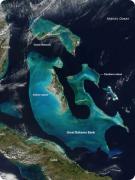Radio Program
Our regular Science and the SeaTM radio program presents marine science topics in an engaging two-minute story format. Our script writers gather ideas for the radio program from the University of Texas Marine Science Institute's researchers and from our very popular college class, Introduction to Oceanography, which we teach to hundreds of non-science majors at The University of Texas at Austin every year. Our radio programs are distributed at to commercial and public radio stations across the country.
Sometime in the not-too-distant future, small submersibles might patrol the world’s oceans for months or years at a time. They’ll monitor temperature, salinity, currents, and other conditions. And they won’t need to gas up their engines or replace their batteries during those long cruises, because they’ll get their power from the oceans.
If you want to get away to get away from it all, forget the Caribbean, the South Pacific, or even the South Pole. We’ve got a place that beats them all: Bouvet Island, a small outcropping of rock and ice in the Southern Ocean. The nearest land is more than a thousand miles away, making Bouvet the most remote island on the planet.
The marine organism known as Alexandrium tamarense looks harmless enough. Its microscopic body is round or walnut-shaped, and is generally colored brownish-orange. Get enough of these little guys together, though, and you’ve got big trouble.
Alexandrium creates what scientists call “harmful algal blooms,” which often lead to red tides. Here in the United States, Alexandrium is found on both the Atlantic and Pacific coasts.
The brown pelican is a common sight around piers and docks along much of the American coastline. But that wasn’t the case a few decades back -- the bird was on the verge of disappearing.
Even to the untrained eye, it’s obvious that the waters of the world’s oceans aren’t the same. The crystalline waters of the Caribbean don’t look at all like the muddy waters off the mouth of the Amazon River.
The difference isn’t limited to the surface, though. In fact, different water masses are stacked atop each other like the layers of a cake.
For a shark, retirement paradise isn’t Florida. Instead, it just may be one of two small island-nations that recently banned shark fishing from their territorial waters.
Being right isn’t necessarily a good thing.
Consider a species of whale that once roamed the North Atlantic by the thousands. It’s slow, it swims close to shore, and it has a lot of blubber. These qualities made it the “right” whale for hunters, so it was called the right whale. But so many were caught that the species almost became extinct -- and could still.
Ice is no problem for a whale that lives its entire life in Arctic waters. It simply rams its way through -- cracking ice that can be up to two feet thick. Its “ram” is a thick skullbone that looks like an archer’s bow -- earning the whale its name: the bowhead.
It may be one of the longest-lived mammals on the planet. Scientists have dug out harpoon points that were more than a century old. And it’s possible that one bowhead was more than 200 years old when he died a couple of decades ago.
To build an island these days, all you need is a few years, a few million tons of sand and rock, and a few billion dollars. In fact, developers from Hong Kong to Dubai have built islands with just that formula.
{mosimage}
To build an island the old-fashioned way, though, you need a lot more time -- but a lot less money.
Fish have many ways to protect themselves from predators. Some use their color and texture to blend into the background. Some dig into the mud at the ocean floor. And some are so fast they simply jet away.
And one species uses a bit of bluster: It puffs up like a balloon to make itself look more impressive. If that doesn’t work, it’s covered in sharp spines that give attackers a nasty surprise.







